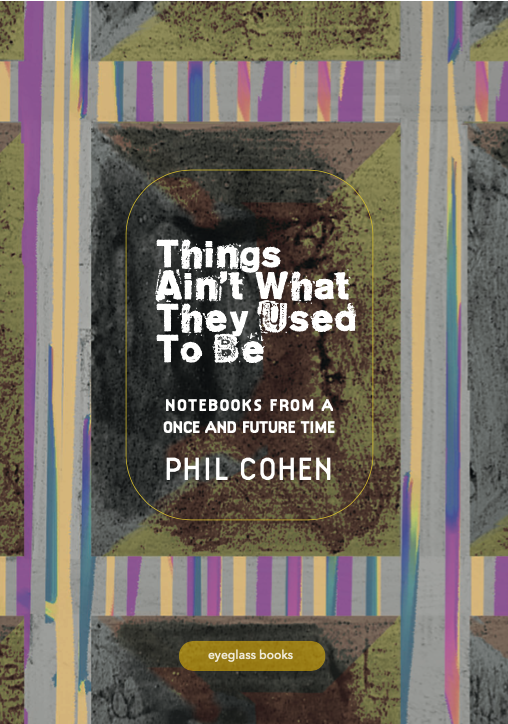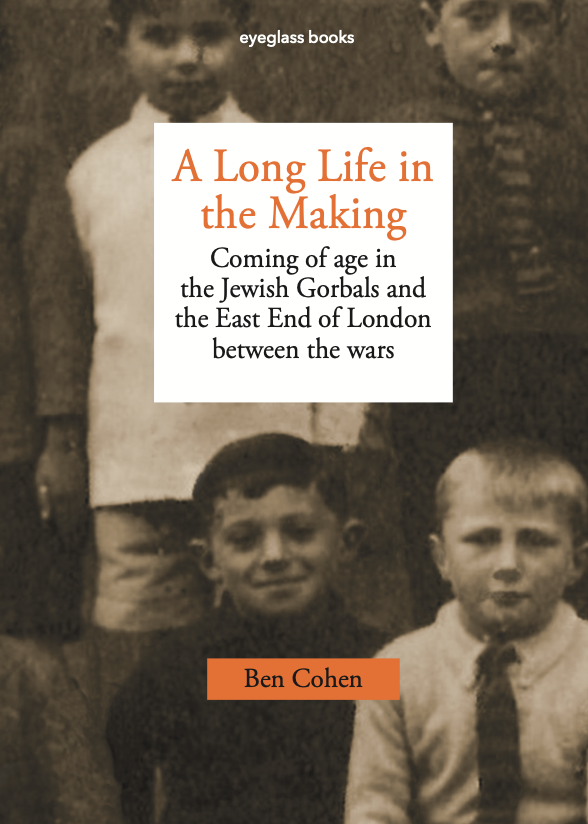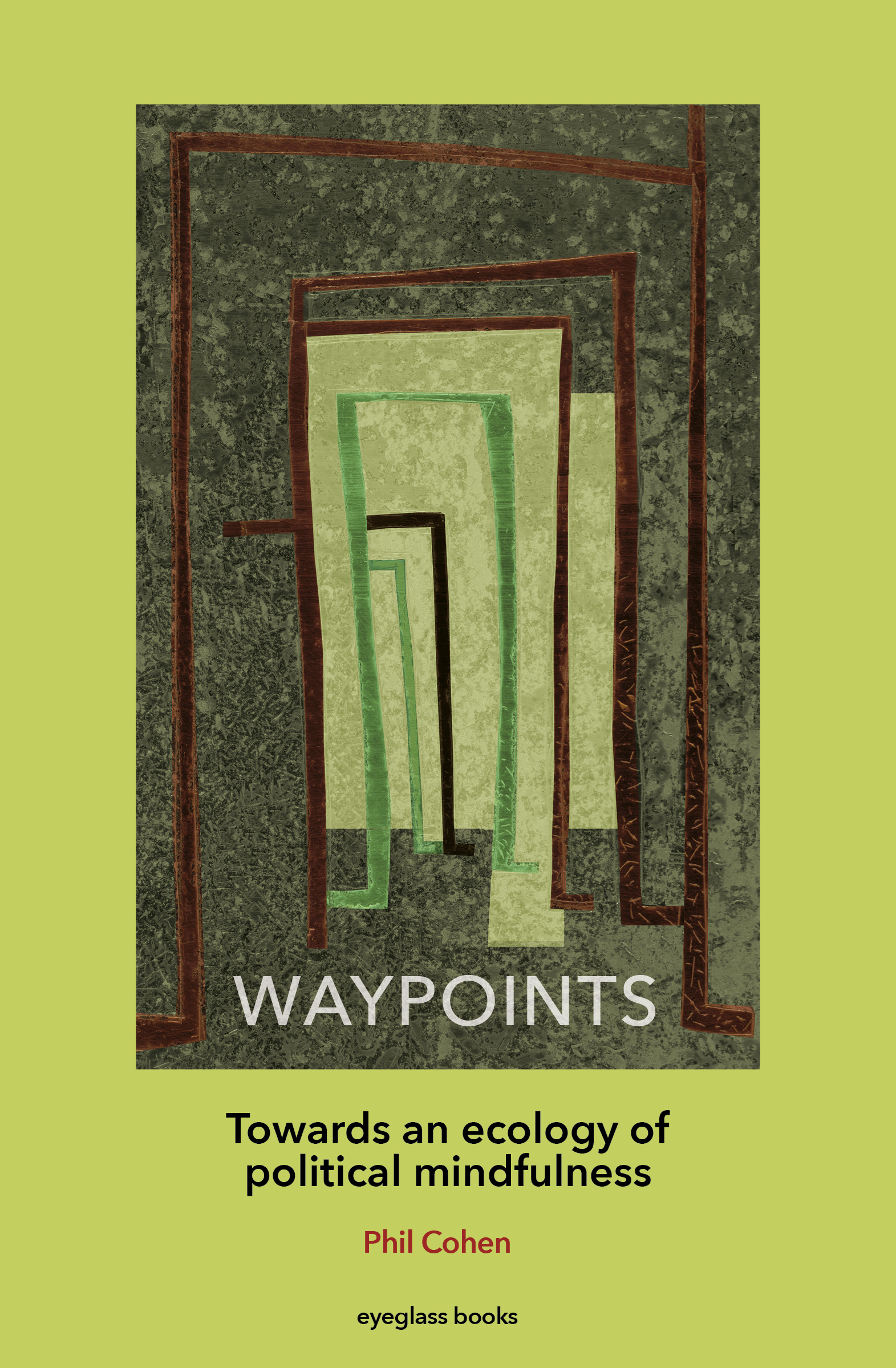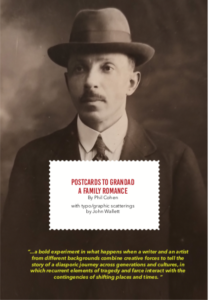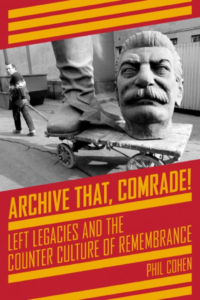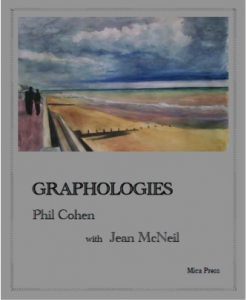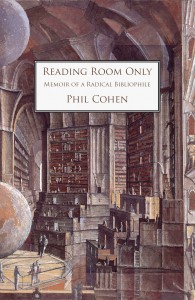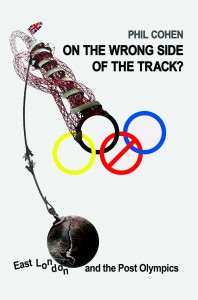Introduction
Trespass is a very complicated, tricky, and sometimes dangerous concept. It occupies an ambiguous semantic space somewhere between a model and a metaphor, that is, it operates within both a normative and poetic discourse of transgression. For example a work of graffiti sprayed on the side of a house can be treated as both an act of cr5iminal damage or trespass, ‘the intermeddling of the property of another’ as the legal statute puts it, and as an act of creative vandalism, one which, if it happens to be by Banksy, may greatly enhance the value of the property in question. It might also serve a social function in marking out a gang territory and convey the implicit message ‘ this is our manor, keep out. Trespassers will be given a good kicking’.
The polysemic aspectof trespass is its special attraction for ethnographers in seeking to define the peculiarity of their profession, which, after all, does not fit neatly into conventional academic pigeon holes; it can provide a useful and even glamorous alibi for what the guardians of political correctness might regard as rather dubious ethical practice of operating on both sides of the line : running with the foxes ( the robbers ) and hunting with the hounds ( the cops). The ethnographer as trickster or shape shifter has had a long, if somewhat chequered career. Ethnography has been very good at impinging on, traversing and going beyond the institutional boundaries drawn by variously cognate disciplines in the human sciences : linguistics, sociology, psychology and even its matrix disciple of anthropology. It attaches its suffix to all manner of fields: ethno-science, ethno-musicology, ethno -biography and of course ethno-methodology, sometimes leading to accusations of poaching. In any case boundary wars break out and charges of intellectual trespass fly around whenever a terra incognita is discovered, and rights of exploration or knowledge claims have to be staked….
These three root meanings (impinging, traversing and going beyond) emphasise the intimate relation of trespass to liminality, to spaces and times where the distinction between self and other, mine and thine, public and private are put in question; it is these social and cultural edgelands where ethnography has often made itself at home. Here trespass becomes a way of describing the disorientation experienced by the fieldworker in the more immersive forms of observation and also the unease which arises when intruding into informants’ intimate lives. To call it ‘legitimate peripheral participation’ is a nice way of endorsing the ethnographer’s position as an initiate into the culture or subculture under observation but as recent cases have shown ‘only observing ‘ can be a difficult legal defence to sustain. At the same time, techniques of de-familiarisation, suspending taken for granted cultural assumptions, beliefs and norms, rendering the familiar strange- an important element in the ethnographer’s toolkit- these procedures open up access to what Freud called the ‘other scenes’ of everyday life, and the emotional hinterlands of social relations, in a way that disconcerts traditional counsel about adopting a dispassionate standpoint. Today the classical form of ‘verfremdung’ has been supplemented, even supplanted, by chemically induced forms of ‘alienation effect’. Brecht and the Russian formalists would have turned in their grave at the antics of the early ethno-methodologists: young west coast sociologists, influenced by 1960’s hippy counter culture and armed with Howards Becker’s ‘Outsiders’ with its impeccably observed instructions on how to get stoned, wandered out into the streets and supermarkets of San Francisco, to discover just how complicated walking or shopping was as ’ a co-managed social activity’ or ‘ an exercise in practical reason’ when you were high.
Interpretive Communities
Ethnographers were and some still are a pretty weird bunch and used to taking a walk on the wilder side of town. We are interested in the fact that people have bodies and feelings, speak in a way that is often closer to poetry than prose, like to gossip, tell stories, jokes and sometimes lie, while working and making things, and generally taking care of business, worshipping all manner of gods including Mammon, cooking, eating, drinking, singing, dancing, laughing, partying, having sex and engaging in various forms of social intercourse, all of which manifold activities in their inter-connectedness are fundamentally what their cultures are about. In contrast the sociology I grew up with was more interested in norms, structures, institutions and ideologies, and the social was seen as a kind of cement that bonded people together while at the same time reproducing divisions and inequalities of every kind.
This distinction of interests and perspectives was also carried over into life styles. In the 1960s and 70’s budding sociologists wore suits ( even the women), were very earnest and quite left wing in a Labour Party sort of way, formed reading groups where they talked a lot about class conflict, social change, and structural reform and spent a lot of time arguing about whether Marx’s Grundrisse was a throwback to Hegelian idealism or a prophetic vision of a post- Industrial society. The budding ethnographer was altogether scruffier and more bohemian. ’Liminality’ and ’Communitas’ were the watchwords, Victor Turner and Carlos Castaneda our heroes, the latter an archetypal ethnographer/trickster, encouraging us to look around for shamans, experiment with alternative life styles and various mind enhancing drugs. And for the politically inclined there was anarchism and situationism.
My rite of initiation into the sacred mysteries of fieldwork occurred in the company of an American anthropologist who was studying witches’ covens of which, it seemed, there were quite a few flourishing in London’s suburbia at the time. We visited one in Eltham whose leader turned out to be a computer programmer, thus confirming an early intuition that belief in magic and technology were not incompatible. The session consisted in everyone getting stoned, listening to Black Sabbath, taking all their clothes off and prancing about. My mentor informed me that this was to get into an ecstatic trance- like state, and might possibly lead to group sex. I decided I had better observe rather than participate. I had an ally in an African lady, who was the only other person who did not take an active part in the proceedings and who, it turned out, was married to another anthropologist in residence, who had brought her back from his last field trip to the Congo, possibly as an addition to his collection of ethnographic trophies. She sat through the entire session without moving, hands primly folded in her lap and declining all invitations to smoke a joint or remove her very expensive Jaeger twin set to lead the dance. Perhaps, I speculated, she’d had enough ‘communitas’ to last a life time and was not about to lend her ethnic credibility to this pseudo tribal cavorting. It was my first lesson in being surprised which, as I later learnt, is what doing ethnography is all about. It also taught me that the line between what might be regarded as legitimately ‘doing fieldwork’ and engaging in more or less illicit and pleasurable activities could be a very fine one, drawn in pretty shifting sands.
The Law and Order of Desire
The law, of course, is all about making such distinctions and making them stick through various sanctions. As a legal category, trespass is a tort, which covers violations to the person, including the right to privacy, to chattels, or personal possessions, and most significantly, to the private ownership of land. So it’s a pretty broad definition of infringement which conflates personal liberty with property ownership and includes physical threats, false imprisonment, the posting of unsolicited email, IDF theft and political acts like the famous Kinder Scout Trespass, which challenged the prerogatives of private landlords over the countryside in the name of public amenity and the collective right to roam. The history of trespass is intricately connected to that of the commons, to common law and to struggles over access to public space and amenity. The term itself came into being in the long and uneven transition from Feudalism, specifically in relation to the enclosure of forests, and the expropriation of customary rights of peasants over its usage as a source of food or other provision,( assarting, scavanging of timber and fruits, hunting of hares and rabbits etc). Yet even here the legal concept of trespass often blurs the distinction between civil and criminal law.
It seems to me that the notion of transgression and the illicit which is evoked metaphorically by trespass has deeper, more unconscious, roots than those admitted by legal notions, bound as they are to a narrow model of human intentionality. Here is how Margaret Drabble in her short story ‘Trespass’ describes the obsession of her heroine, who, might just be herself:
‘ She was attracted to “keep out” notices and enjoyed breaching boundaries and exploring forbidden ground. She dated this tendency to the early thrill of breaking into the abandoned garden of a large derelict house which she and her two friends passed every day on their way home from school. The front gate to the drive was chained and padlocked, but it was easy to squeeze through the fence and set up a little camp in the overgrown shrubbery. They called their camp the Wilderness, a word that delighted them. They would crouch there and eat the lurid little shop tartlets of scarlet jam and glaringly white artificial piped cream that they had bought with the money they had saved from their bus fares. Their mothers would have disapproved, both of the trespass and of the tartlets, but the sense of the illicit added to the pleasure.
In later years, she encouraged a succession of admirers to scramble after her over barbed wire and through hedge bottoms to find picnic places and hidden bowers and dells and burrows. She discovered overgrown public footpaths and pursued long-lost rights of way and opened up new tracks of her own. She wasn’t dogmatic about it. She wasn’t a rights of way ideologue. She just wanted to go over the stile or through the gap to see what was on the other side. Not all her followers were as keen as she, and some dropped by the wayside, complaining of barked shins, of stings and insect bites, of mud and thorns. By middle age, when her husband and her children had flown the nest, she found she preferred solitary forays, with no one to act as a clamp or a clog. She took her own risks, happily. Occasionally she took a companion, but the timidity of others made her nervous. It wasn’t as though she was very bold herself: she was a cautious trespasser. And as she grew older, she found she needed all her courage for herself. ‘
The story nicely captures the furtive aspect of trespass, the word itself is a whisper, its very utterance evokes the secret thrill of being in the wrong place at the wrong time possibly with the wrong people. Yet if it can be a game of seduction, based on the lure of the interdict it is one that leads us well off the beaten track of critical ethnographic reflection.
The Primal Scene
I want to argue that the primal scene of trespass links it to the origins of curiosity and the desire to know and thence to the hidden foundations of ethnographic observation. It concerns the phantasy which the child entertains about the parents coupling as a singular and potentially narratable event. The phantasy may or may not refer to a real incident in which the child watches the actual act of coitus, usually from some secret vantage point in the parental bedroom, without being seen or disturbing the performance. It may be an imaginary keyhole or a real one, but in either case the child is placed in the position of being an observer who cannot actually join in, unless to interrupt the show, but who can participate vicariously, as a voyeur, from a safe distance provided nothing is said or done to give the game away. The child trespasses on the field parental desire, which is out of bounds, but remains unobserved in doing so[1].
Let us also remind ourselves that the mother’s body is the first territory the child explores, the first landscape that is mapped, with its hills and valleys , its zones of thrill and no go areas . The mother’s lap is our first prospect on the world and also our first refuge from its impingement- and as such is the model for the building of dens and the assertion of gang turf. Michael Balint has shown us that how we hold the mother’s body unconsciously in mind has a lot to do with how we negotiate the environment as a source of excitement or threat, and hence over-determines the navigational practices that we adopt in our daily traffic with the city. Jay Appleton has also suggested how this underpins a standpoint aesthetics, and shapes our depiction and appreciation of particular kinds of landscape.[2]
Now what has this to do with the ethnographic gaze and its implications as an act of trespass? I suggest that it provides a genealogical model for a method of observation which does not give the game away, which seeks to know everything about what the Other is up to, but at a safe distance, without disturbing the performance, a method which notes every last physical detail, stores it in a precise inventory, so that the phenomenon itself becomes fixed and controllable in memory, and thus creates a defensive organisation of the real completely dissociated from any sense of identification or participatory desire. It mandates a phantasmagoric view of ethnography as form of social espionage, the ethnographer as under cover investigator, playing fly on the wall or spook that sits by the door, bringing the inside story about what life is really like on the other side of the tracks to a more or less voyeuristic audience. In the era of auto-ethnography, when the ethnographer takes centre stage as the hero of his (and less often her) own research story, this paradigm has become a new warrant of authenticity.
Rogue Sociology
Take for instance a book published a few years ago by Penguin which is an account of a piece of ethnographic fieldwork about black street gangs in Chicago, and turned out to be a best seller. Entitled ‘ Gang Leader for a day : a rogue sociologist takes to the streets’, its author, Sudhir Venkatash sought to follow in the footsteps of Thrasher ,Whyte et al and produce another classic reading of the life of the urban underclass. The book is a blow-by-blow account of his adventures with The Black Kings, a well known drug dealing gang located in the immediate neighbourhood of the university. In the opening chapter, called ‘How does it feel to be black and poor’ he writes:
‘ In orientation classes, during my first weeks at the university we were handed detailed maps that outlined where the small enclave of Hyde Park in which the campus was situated ,began and ended: this was the safe area. Even the lovely parks across the border were off limits, we were told, unless you were travelling in a large group or attending a formal event… It turned out the ivory tower was an Ivory fortress. On one side of the divide lay a beautifully manicured Gothic campus, with priviledged students, most of them white, walking to class and playing sports. On the other side were down and out African –Americans offering cheap labour and services ( changing oil, washing windows, selling drugs or sex, or panhandling on street corners.’
Whether or not it was because he was Indian (he doesn’t say), young Sudhir felt alienated from his fellow students and began to hang out in the nearby black neighbourhood. The fact that the area was placed officially out of bounds, was clearly one its attractions for him. Such informal ‘beatings of the bounds ‘ are an open invitation to trespass[3]. Sudhir gets to know one of the gang leaders well and gets adopted as a kind of honorary ‘nigger’. At the same time he becomes interested in the work of the Chicago School of urban sociology, and decides to turn his recently acquired social capital as a familiar face in the hood, into intellectual capital as a PHD student doing a street ethnography. He is very impressed by the social, entrepreneurial and management skills which his friend displays in keeping his own people in line, and ensuring that potential friction with other gangs is kept in check. Then, as a result of a chance remark, he has the opportunity to cross the line and become a stand- in for the gang leader. Despite all the warnings from his professors and fieldwork mentors with their cautionary tales from the field about ‘over identification’ and the danger of‘ ‘going native’, not to mention the personal risk involved, he seizes the time, and much to his own and the gang members amazement proves that he can do the business.
The book belong to a well established genre of ‘trading places’ accounts, where for example investigators adopt the clothes, lifestyle and even the skin colour of the urban poor to ‘pass ‘ as one of them, but in this case, of course, the ethnographer metaphorically ‘blacks up’ by assuming the actual position of gang leader. In some senses it is an everyday story of race, class and imagined community conveyed in an ethnographic idiom, but one which self consciously and without irony celebrates its own double act of trespass: crossing the line which separates privileged middle class students from the boys in the hood, en route breaking the tabu on literally taking the role of the Other , and intruding importunately on the personal life of his main informant.
The Racist Imaginary
Race and its discourse is a particularly interesting scene of trespass, and for two reasons. It constitutes a strong, often physically marked, cultural and social barrier between ethnic groups, some of whom, on other dimensions, might have much in common. Crossing that divide from either side can be a hazardous business leading to accusations of treachery or worse. Secondly it constitutes a highly contested space of representation, in which signifiers of difference become racialised, and where accusations of racism fly about in all directions. In some contexts a slip of the tongue is enough to get you labelled a quasi-Nazi , harbouring genocidal impulses towards Jews or Blacks. Partly as a result, race is subject to massive denial and disavowal, from ‘passing’ to the ritual disclaimer ‘I’m not racist but’ and ‘some of my best friends are Romanians’.
Just who, or what is racist has become a major bone of contention, both in the Academy and in the wider society. Is the whole society or its key institutions like the police, institutionally racist? Are white people intrinsically or unconsciously racist, given their structural implication in the legacy of slavery and Empire ? Can black people be racist? What is the difference between racism and xenophobia or ethnic prejudice. All these topics continue to be debated, covertly or overtly, in the media and have assumed new salience with the rise of UKIP.
These questions, and the public discourse around multiculturalism and anti-racist education which addresses them, has formed the backdrop to much of my ethnographic research in East London schools and communities over the past 20 years. During this time the area has undergone a dramatic demographic change which for the first time has brought a large middle class professional population as residents, and also new immigrant communities from the Indian subcontinent, Africa, and most recently Eastern Europe.
The focus of much of this work was to understand the springs of the popular racist imagination and its relation to the transformations taking place in white working class youth cultures and communities. The work also provided an opportunity to reflect on the strategies and ethics of conducting dialogic research in front line conflict situations where issues of class and race are paramount and community relations are polarised. What methodologies were required or justified to create a space of representation in which young people could voice their feelings and beliefs about race when this was likely to be heavily populated by negative, and often racist attitudes subject to censorship or punitive sanction in the school, but with a widespread and even normative presence in peer cultures. Was this an open invitation to go beyond the legal limits of public debate or did it provide an opportunity to work through to a more tolerant position?
In one piece of field work I organised a discussion with a group of ten- and eleven-year-old white boys attending a primary school in an area of Docklands that had a predominantly white intake, drawn largely from ex-dockers’ families. The school was deliberately trying to keep alive a sense of working-class community even as its real infrastructures were collapsing. Its curriculum and ethos were as deliberately old-fashioned as the building itself. Parents and grandparents who had gone to the same school could be sure that their children would be singing many of the same hymns, taking part in the same historical pageants, and learning the same English lessons as they had done. The rationale was that it was necessary to provide this stability and historical roots for children who needed the sense of security that traditional forms of learning and discipline provided at a time when so many of the familiar landmarks of their childhood were being bulldozed around them.
Some of the children who attended the school had been actively involved in a series of attacks against Black and Asian families who had been moved into one of the most run-down estates in the area. The head was concerned that something should be done. The school had a policy of disciplining any child found guilty of making racist remarks, and claimed to have silenced even the most vociferous offenders. At the same time he permitted the expression of racialist views in a mock election, since that was an education in the workings of democracy. Standing against its red (Labour), blue (Tory) and purple (Lib-Dem) rivals, the white (racialist) party won easily on a programme of voluntary repatriation for black immigrants. So at one level the local culture of racism was explicitly outlawed while at another level it was being given a legitimate space of representation.
Nevertheless the head thought that an outsider, a supposed expert in this kind of thing, might have a useful role to play. As he put it, it was a question of letting these kids get it off their chest. ‘Lance the boil, Mr Cohen, lance the boil.’ The medical metaphor should perhaps have warned me of what was to come when I took a group containing some of the hard-core racists out of school for a preliminary discussion, which, with their permission, I taped. It was clear that they had been waiting a long time for this opportunity to ‘say what we really feel about blacks’, as one of them put it.
Over the years since it was made I have worked with this transcript in many different contexts, with teachers and youth workers, policy makers and young people themselves. A psychoanalyst criticised me for talking too much and possibly being provocative, whereas I should simply have listened and remained non committal. A narratologist thought I should have prompted more stories. Everyone has their own take. One of the most interesting comments was made by a 18 year old Bangladeshi youth worker who said he thought that John was a nutter, and that the thing to do was to work with the group to shift the balance of power away from him and towards Darren.
One of my difficulties in responding to these boys was to avoid falling back on the denunciatory discourse of moral, symbolic and doctrinaire anti- racism, on one hand, or simply collusively endorsing the racism sentiments by not commenting on them at all: silence in this context being taken as approval. I was aware of attempting to ‘reason’ with John, the main peer group spokesperson, although I had already published a long critique of rationalist / enlightenment pedagogies as a means of getting to grips with the myths and phantasies of the racist imaginary. I was also aware of the need to protect Darren from their taunts, yet to do so too overtly ran the risk of getting him labelled a teacher’s pet and further isolating him.
There is one point in the discussion where one of the boys (John) turns to me and asks rather aggressively whether I am against whites. It is only in this moment of confrontation that the word itself is used. For the rest of the time the references are coded and oblique. It did not seem at the time that the boys were much concerned about my own position. But I should have known better. If ideology always works behind the backs of its subjects, then it always strikes when and where and in ways you least expect it.
On our return to school after this session, John suddenly got very anxious about what would happen to the tape. He was worried that I might show it to the head or someone else in authority and get them all into trouble. I explained that it would be transcribed, and the names and other details would be changed so no-one could identify either the school or them. This seemed to reassure him and I thought no more about it. Next week when I went into the school the head called me into his office. He looked angry and upset. There had been a complaint from one of the children in the group that I had used bad language. This could not of course be tolerated. Teachers had to set a good example in terms of self-restraint. The boy’s mother had been in to complain. If it happened again the project would be stopped. He did not seem particularly impressed by my denial of the charge. And indeed I did begin to feel as if I must have been guilty of some indiscretion – some of the things the boys had said had made me very angry. The only way to find out was to listen to the tape. At this suggestion the head got even more agitated. Where was the tape? It should not have been made. What was going to be done with it? It should be erased. Even though we had explained at the outset that we would be making tape recordings as part of the research and had given the usual guarantees of confidentiality, this did not satisfy him now. No more taping!
Now, what had happened here? Clearly my reassurances of confidentiality the previous week had not been believed. I had apparently broken the ethnographic contract. John still thought that I would use the tape behind his back to expose his racist beliefs and activities and, as he admitted later, ‘have him taken away and put in prison’. So rather than have his bad language –his racist discourse – taken down and used as evidence against him, he had gone behind my back to the head and accused me of bad language. Perhaps he also secretly hoped that I would be taken away and put somewhere where I would be incommunicado. He had thus neatly turned the tables on me, put me in the position of a naughty boy, while he, using the head as a kind of ventriloquist’s dummy, tried to shut me up. It was thus a case of double trespass – he imagined that I had intruded on his personal space and made it public, exposing him to censure, and.in his eyes subject to false imprisonment, so he repaid the compliment.
It was not in fact difficult to feel that people in this school were ganging up and doing what they could to undermine the project. Support from other staff had been minimal. I got a sense of a closing of the ranks against an unwelcome intruder. My work threatened to undermine theirs. I was in effect a trespasser who didn’t belong in this community of practice. My position within it may have been peripheral, but its legitimacy was in question. In other words I was being given the same treatment as was being daily meted out to the Vietnamese and Bangladeshi communities, just as earlier it had been experienced by the Jews. As for the tape, this had ceased to be a medium of mechanical reproduction – it now directly stood for the racist discourse it had recorded. The racism was no longer in the school or in the community, or in even the children’s acts or and words, it was in the tape. And so it could be simply erased, the record wiped clean, by the press of a button.
John and his henchmen were ‘out’ racists, who apparently did not suffer pangs of guilt about their attitudes to black people, let along their actions, although as we have seen this spoke to a lot underlying anxiety about their own sense of identity. Many people are of course are much more circumspect and evasive about the subject. In working with what hallway and Jefferson call ‘defended subject’ it is necessary to adopt a much more indirect approach . In other research in similar contexts I used guided phantasy and mapping exercises to explore the places – and by association – the people, whe were felt to be dangerous or self. It could be argued that this involved an element of deceit with informants- the purpose of the research was presented as being about the issue of public safety and danger- which was at best a half truth, although of course the fear or threat of racial attacks or harassment is very much part of that agenda. I also attended a number of local ‘rights for whites’ meetings, to observe and notate , but this involved no element of participation. A number of journalists and anti racist campaigners have successfully infiltrated racialist and white supremacist organisations like the National Front , the BNP ,Combat 18, Aryan Strike Force or Blood and Honour- in some cases adopting the Trotskyist tactic of deep entrism , in order to expose their activities. Although there is a place for investigative journalism, and a case to be made for adopting such tactics as being in the public interest, I do not think that this kind of muckraking sociology adds much to our understanding of the roots of racism or how to combat it. Indeed in its obsessive concern with conspiracy theories and undercover activity , its perspectives and practices often mirror those of the extreme right.
Dis/closures
It seems to me that that the spaces and modalities of trespass are proliferating. As globalisation hollows out the cultural and social resources which hitherto enabled working class communities to be resilient in the face of rapid demographic and structural change, the local is made to carry a burden of representation for which it is not equipped. Nimbyism and nationalisms of the neighbourhood, what Freud somewhat ironically called the’ narcissism of minor difference’ rules OK. The feeling of being immobilised in the midst of accelerated flows of capital, labour, goods and services, strengthens the rules and rituals of territoriality – and hence of trespass – through which young people especially cling on to a precarious sense of identity and status. These rules and rituals frequently become racialised, as the sense of invasiveness becomes more pervasive .
Meanwhile for an older generation, it can seem as if the chaotic synchronicity and multitasking which characterises everyday life and labour under advanced capitalism is just too overwhelming and so they retreat into nostalgic invocations of insular worlds that have been lost or which may have never even existed but which underscore the notion that a once- upon- a- time way of life has been intruded upon, infiltrated by trespassers. This principle of trespass has now become naturalised in moral panics about alien species invading and destroying the ecology of the British countryside, driving out home grown plants from their ancient niches, and transforming the native habitats of heath and home into a wilderness where only Japanese Knotweed has the right to roam.
This is not the only response. At the end of Margaret Drabble’s short story, her heroine, who has decided to take on the forces of globalisation, as represented by EDF, goes on one of her off the beaten track expeditions to a decommissioned nuclear power station:
‘She made her way through a gate on the path and encountered a large board saying: THIS IS PRIVATE PROPERTY AND IF YOU PROCEED BEYOND THIS POINT YOU MAY BE REGARDED AS A TRESPASSER.
That word “may” was interesting, and it was not at all clear to her what point it was that she should not pass. Perhaps she had already passed it. A little further on she could see a white notice tacked on to the weathered wooden board. “Nature trail closed,” it declared in large print, and in smaller print it said it was closed until further notice because of engineering works. Further notice, she knew, would mean forever. An inexpressible and overwhelming sadness entered her. It was all over, nobody would stop her in her trespassing, but nobody would stop this process of appropriation either. It would continue, the digging and grubbing and excavating, until all this land was gone. There would be little flickers of protest, a few sparrow people gathered together peacefully on street corners with banners, a small headline in the local press. But protest and trespass were hopeless and pointless, and everyone knew it.’
I think she is being unduly pessimistic, perhaps because optimism of the will is more difficult to sustain as you get older. In fact the right to roam or trespass, is continually being reasserted if not always in easily recognisable forms. While home boys and hoodies remain stuck on the front lines of their imaginary barricades, taggers and urban explorers claim the right of full access to the city; through their presence and their practice they contest the continual encroachment of private property and profit on the enjoyment of public amenity. While many academics hide in their intellectual silos, terrified of making the wrong career move, and the political class dig in for the duration in their parliamentary bunkers, scholar activists are venturing across disciplinary divides, and connecting up with communities and social movements that are creating new forms of democratic politics. As the surveillance society institutionalises digital trespass to support ever more intrusive form of policing and social regulation, so the Occupy movement stakes out a new terrain of engagement in terms of what David Graeber has mischievously called ‘actually existing communism’, the cultures of mutual aid which cut across and go beyond the social hierarchies based on concentrations of wealth and power and the monopolies of knowledge and expertise which underpin them. So let us carry on encroaching on each others disciplines, let ethnography impinge on geography, and cartography traverse demography to yield ever more graphic accounts ; let us rejoice and make the most of the fact that the map is not the territory, and never will be, recognising that in that tension or gap, which opens up and becomes apparent in the act of trespass, there is still a whole world to be won. Or lost.
References
Jay Appleton The Experience of Landscape Wiley 1996
Michael and Enid Balint Thrills and Regressions Hogarth Press 1957
Shane Blackman ‘Hidden Ethnography: crossing emotional borders in qualitative accounts of young peoples lives Sociology 2007
Howard Becker Outsiders:studies in the sociology of deviance Free Press 1966
Carlos Casteneda The teachings of Don Juan: a Yacqui Way of Knowledge 1969
Phil Cohen On the Wrong Side of the Track? East London and the Post Olympics Lawrence and Wishart 2013
‘Racism’s Other Scenes’ in J Solomos and D Goldberg (eds) Blackwell Companion to Race Oxford University Press
Margaret Drabble Trespass Guardian Short Story 2012
Sigmund Freud Civilisation and its Discontents penguin Edition 2002
‘On the sexual theories of children’ in SE (1908)
David Graeber Fragments of an anarchist anthropology University of Chicago press 2004
Wendy Hollway and Tony Jefferson Doing Qualitative Research Differently Sage 2000
Tim Ingold Redrawing Anthropology Ashgate 2011
Geraldine Lee-Teweed and Stepanie Lincogle (eds) Danger in the field :ethics and risk in social research Routledge 2000
Gary T Marx (ed) Muckraking Sociology:research as social criticism Transaction Books 1972
Benny Rothman The battle for Kinder Scout Timperley 2012
Frederick Thrasher The Gang : a study of 1313 gangs in Chicago University of Chicago press 2013 c 1936
Victor Turner The Ritual Process: structure and anti-structure Penguin 1969
Sudhir Venkatash Gang Leader for a day: a rogue sociologist takes to the streets Penguin 2008
William Whyte Street Corner Society University of Chicago 1947
[1] Freud notes that in some versions of the phantasy it appears as a screen memory of some real act of violence witnessed between the parents, in a way which both conceals and evokes a sadistic rendition of sexual intercourse.
[2] This is discussed in a forthcoming book :Material Dreams and the Un/making of Modernity forthcoming from Palgrave Macmillan.
[3] Somers Town near Kings Cross had the same appeal for me when I was growing up in what my parents insisted I call Bloomsbury and was warned that ‘people like us’ just did’nt go there. This is discussed in my memoir Reading Room Only:Memoir of a Radical Bibliophile Five Leaves 2013
